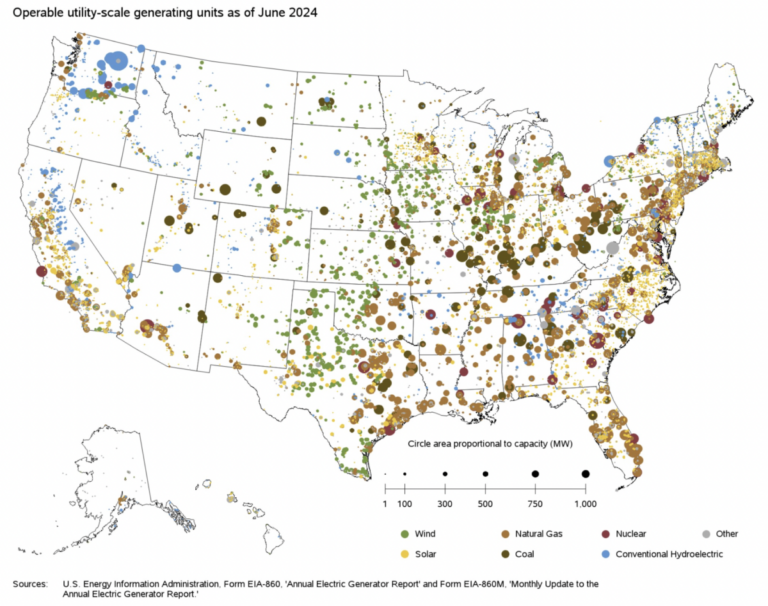According to the U.S. Department of Energy’s EIA, the United States will have connected 20.2 GW (AC) of utility-scale power plants to the grid in the first half of 2024. This capacity includes 12 GW of solar, which represents 59% of the total additions. . Energy storage accounted for approximately 4.2 GW of this new capacity.
Florida and Texas led the way in utility-scale solar development, contributing 38% of new solar capacity. Notable projects include the 690 MW Gemini Solar installation in Nevadathat integrates solar and storage, and the 653 MW Lumina Solar Project in Texas.
Energy storage was the second most important technology in terms of capacity with a total deployment of 4.2 GW. California led the charge, contributing 37% of total energy storage capacity, followed by Texas (21%), Arizona (19%) and Nevada (13%). Together, these states accounted for 90% of the added energy storage capacity, with the 380 MW battery at the Gemini facility being the largest of the period.
The retirement of fossil fuels far exceeded the deployment of new fossil capacity. The EIA noted that 5.1 GW of capacity was retired, of which 53% was methane (2.7 GW) and 41% was coal (2 GW). In contrast, only 0.4 GW of new gas capacity was deployed.
The growth trajectory of the US energy sector is expected to continue its upward trend. For the second half of the year, the EIA predicts an additional 42.6 GW from new capacity deployment, including 25 GW from solar energy and a further 10.8 GW from energy storage. Combined with the 12 and 4 GW capacity in the first half of the year, the country could end 2024 with 37 GW of new utility-scale solar and 15 GW of new energy storage facilities.
To read further, visit our pv magazine USA website.
This content is copyrighted and may not be reused. If you would like to collaborate with us and reuse some of our content, please contact: editors@pv-magazine.com.
Popular content



